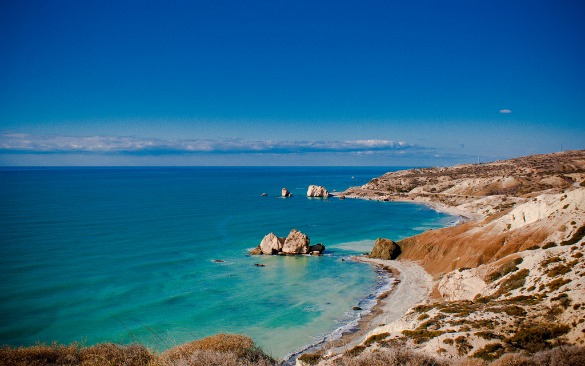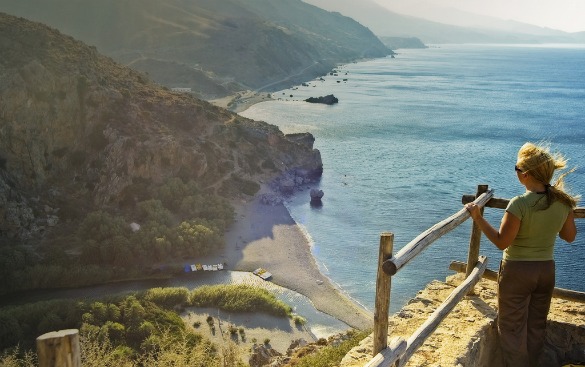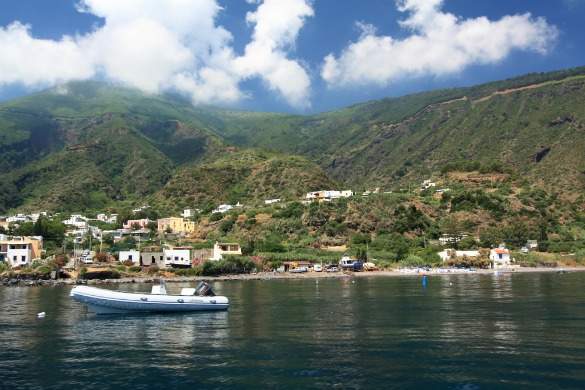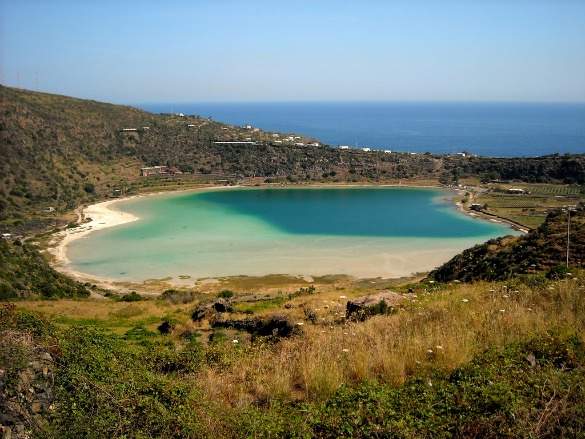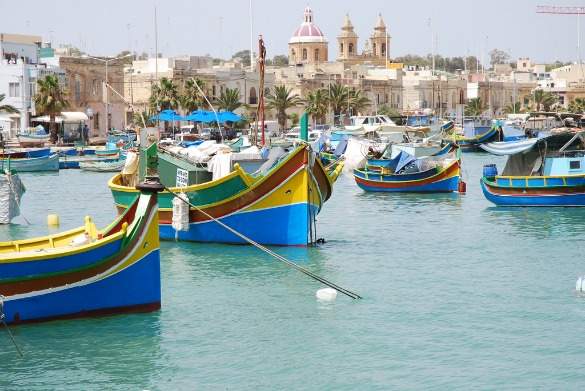The islands of the Mediterranean have captured human imagination since the beginning of time. Preserving vestiges of the rich diversity of languages, religious beliefs, architecture, agricultural practices, culinary traditions and social customs introduced by the endless waves of conquerors that have inhabited their shores, the islands are steeped in history and culture, and rooted in ancient mythology. Bound by turquoise blue waters, boasting spectacular vistas and a great diversity of endemic flora and fauna, the islands seem to exist in a world of their own—a world in which time slows down, and life is savored. It is no wonder then that they have been the subject of so many artists’ brushes, writers’ tales, and the location for an ever-growing number of movies.
With so many to choose from, and an increasing amount of development happening on so many of the Mediterranean islands, it can be challenging to pick an island destination that provides a well-rounded, rich and distinctive combination of travel experiences. If seeing unspoilt natural and agricultural landscapes, and enjoying unique island culinary delights and cultural practices is a priority for you, then getting an insider’s view of a handful of islands where it is still possible to experience the traditional way of life may help you choose a destination that satisfies all your needs. The following six Mediterranean islands, often overlooked by outsiders, epitomize the distinctiveness of the region’s history, culture, cuisine and natural beauty.
Cyprus
Flanked by Syria, Lebanon and Israel to the east, Egypt to the south, Turkey to the north and Greece to the northwest, the island of Cyprus occupies a strategic position in the eastern Mediterranean. Cypriots were ruled by wave after wave of foreign powers before gaining their independence from the British in 1960. Turkey invaded in 1974, occupying a third of the island. Today a buffer zone, patrolled by the United Nations Peacekeeping forces, snakes across the island, separating the Turkish Cypriot north from the Republic of Cyprus in the south.
With a military border crossing right through the middle of it, the city of Nicosia is a fascinating juxtaposition of cultures. Venetian walls surround the old city, and the Muslim call to prayer reverberates down narrow streets that weave their way between old stone and mud-brick houses, many of which have been abandoned since 1974, giving the old city a silent, lethargic feel. Visitors can enjoy a Turkish bath in the Hamam Omeriye, wander through vegetable and fruit markets, enjoy a khoriatiki salad, stewed lamb and potatoes, or black-eyed peas next to Phaneromeni church at Mattheos, or relax with a refreshing drink at Ta Kala Kathoumena or Brew.
Outside the city, Cyprus’s Troodos mountain range has well-preserved Venetian bridges, nine churches, and one monastery that are UNESCO world heritage sites. It also has some beautiful villages, like Kakopetria (Bad Rocks), with bubbling creeks, distinctive stone buildings and cobbled streets. Spitiko Tou Archonta is a quaint bed and breakfast in a meticulously renovated Cypriot village house in the lush mountain valley of Treis Ellies (three olives).
Between Troodos and the ancient capital of Paphos is the Curium Amphitheatre, carved into the cliff side in the 2nd Century AD. The theatre has spectacular views of the Mediterranean Sea, and hosts concerts and Shakespearean plays throughout the summer. Petra Tou Romiou, along the southern coast, where Aphrodite rose out of the sea, is the perfect place for a swim. Spend the night at the Vasilias Nikoklis Inn, located in a river valley just east of Paphos.
UNESCO has designated the entire city of Paphos as a World Heritage Site. Heading north from Paphos, the villages of Polis and Latchi have delicious fresh fish tavernas. Takkas Bay Restaurant, perched on top of a hill above a clear turquoise bay, is a favorite among locals. Be sure to try their kalamari, octopus, red mullet and sea bass. Just down the coast are the Baths of Aphrodite, great hiking trails, and the Akamas peninsula—miles and miles of the best swimming and diving bays on the island. Golden Beach, at the end of northern Cyprus’s Karpasia peninsula, is another beach worth crossing the border to get to, as are the cities of Famagusta and Kyrenia. Despite a recent increase in development, much of the north still provides a snapshot of what the entire island looked like prior to the 1974 invasion.
Cyprus’s main port at Limassol can be reached by ferry from a variety of ports scattered around the Mediterranean. The island’s two airports at Larnaca and Paphos offer regular international flights. There is a bus system connecting the main towns and cities, as well as a plethora of taxis, but renting a car is the best (and in some cases, the only) way to see many of the most beautiful areas of the island.
>> Find cheap flights to Cyprus and read our Cyprus travel guide
Crete
The island of Crete in the southern Aegean Sea has mountainous topography with lush river valleys, stunning gorges, fertile plateaus, and wide, open plains. Before becoming part of Greece in 1913, it had many rulers, each of whom brought to the island a wealth of architectural styles, and religious and cultural practices that are still visible today. In Crete’s capital, Heraklion, and within a short drive you’ll find the Minoan Palace of Knossos, archaeological and natural history museums, a Venetian fortress built in the early 1500s and Agios Titos, which was was built as a church by the Byzantines, re-built by the Venetians in the 16th century, and turned into a mosque by the Turks, before being restored into a Greek Orthodox church in the 1920s.
To see the island’s natural wonders, take a day hike through the Gorge of Samaria to see the island’s wildlife. Other areas to explore are the Valley of the Dead, named after the Minoan Graves found there, in eastern Crete,; the E4 European Walking Path, which stretches across the island; and the two freshwater lakes of Kournas and Aghia which are excellent spots for bird watching. Crete has an estimated 3,500 caves, many of which have mythological, archaeological, and religious significance and Paleohora, on Crete’s southwest coast, offers whale-watching tours. The island is also home to the largest natural palm forest in Europe at Vai and Chrissi Island—an uninhabited island with beautiful beaches, Minoan ruins, and a chapel dedicated to Saint Nicholas – is located off of Crete’s southern coast.
The island is known for its delicious wines, tsikoudia (clear grape spirit), olive oil and mizithra, anthotyros and kefalotyri cheeses. Dolmathes (rice and mince meat -filled grape leaves), saganaki (fried cheese), seafood, (especially kalamari), spanakopitas and tyropitas (salty spinach and cheese cakes) are also popular. Viticulture and olive farming have generated thriving olive oil and wine industries and the island also produces oranges and lemons.
Heraklion’s Nikos Kazantzakis airport and Deskalogiannis airport at Chania offer flights to major European and Middle-Eastern airports. Renting a car is the most practical way to navigate the island.
>> Find hotels in Crete or read about things to do in Crete
Salina
Considered the most verdant of Sicily’s seven Aeolian Islands, Salina’s beautiful Pollara beach, whitewashed houses, narrow streets, steep cliffs, panoramic views and lush vegetation were made famous by the movie Il Postino, in which the poet Pablo Neruda befriends a local postman during a brief period of exile on the island. The island is renowned for its locally grown capers, fresh fish, grapes, and locally made sweet Malvasia dessert wine. The annual caper festival is celebrated in June, and islanders host a wine fest in October. To sample the local cuisine, enjoy a meal at Cucinotta Rita, Portobello, or Da Alfreda in Cucina.
The island has two inactive volcanoes, Monte Fossa delle Felci and Monte dei Porri, which form a nature reserve, providing excellent hiking trails and spectacular views of the sea. In August the islanders celebrate the feast of Assumption at the Santuario della Madonna del Terzito, in the valley that stretches between the two volcanic peaks. Salina is surrounded by pristine waters that are great for swimming and diving, and visitors can take a boat ride around the island to enjoy the views from the water. Those who would rather stay on land can visit any of the local Malvasia wineries that are scattered around the island.
Salina has two main ports, Santa Marina and Rinella, both of which can be reached by hydrofoil or ferry from Naples, Palermo, Reggio Calabria, Messina and Milazzo. A regular bus service connects the villages on the island, and bicycles and mopeds can also be rented. There are many places to stay on the island. If you want luxury, Capo Faro is a good choice. Hotel Mercanti di Mare, and Pensione Mamma Santina are simpler, with excellent hospitality and service.
>> Find out how to get to Sicily from Italy and read our Sicily travel guide
Stromboli
Stromboli, one of seven Aeolian Islands located off Sicily’s northern shore, is an active volcano. It has been erupting continuously for the past 20,000 years. The island has two settlements: a tiny cluster of houses along its southwestern coast called Ginostra, and a conglomeration of three villages nestled into its northeastern shore named Stromboli. The whitewashed buildings are a vibrant contrast with the coal black volcanic sand, deep blue sea, and the sunlit deep green slopes of the volcano and the streets are too narrow for cars, so all exploration of the island must be done by foot. The only mechanized form of transportation are the small, three-wheeled taxis used to transport visitors’ luggage from the port to their accommodations.
Daytime activities include swimming or diving in the island’s cool waters, sunbathing on the stunning black beaches, or enjoying fresh seafood at one of the few restaurants. A few worth checking out are Ai Gechi, L’Osservatorio, where diners can eat pizza and watch the volcanic eruptions above, and Il Cannetto, which has spaghetti alla Strombolana and Pasta con le Sarde, among other dishes. The most spectacular time to be on the island is at night, when everything is black save the volcano. There are no streetlights on Stromboli, making it the perfect place to enjoy the natural fireworks erupting out of the main crater from the safety of a boat, or, for the more adventurous, to join a walking tour, and take the three hour hike up the slope of the volcano to watch the lava bursts up close.
Stromboli can be reached by ferry or hydrofoil from Naples, Palermo, Reggio Calabria, Messina and Milazzo. There are a number of hotels on the island. Hotel Miramare and Residence Aquilone are small, quirky, family run businesses located in the main settlement of Stromboli.
Pantelleria
Pantelleria is a terraced volcanic island that lies southwest of Sicily, and northeast of Tunisia. Occupied for the last 35,000 years, Pantelleria has had a succession of foreign rulers including the Arabs, who gave the island her name, which means daughter of the wind. Pantelleria town was badly damaged during the Allied forces bomb raids in 1943 but today it is a peaceful and thriving community, famous for its zibbibi grapes and capers. Visitors flock to the island to enjoy its sweet amber passito, muskato dessert wine, and pesto pantesco, a sauce made from tomatoes, capers, basil and garlic, eaten with pasta or bruschetta. Other culinary specialties include yellow grape jelly, ricotta and mint raviolis, fish couscous, lobster, crab, sea urchin, and sciakisciuka, a spicy Mediterranean vegetable stew. Il Cappero, Zabib, and La Vela restaurants serve delicious local dishes.
Pantelleria’s Specchio di Venere (Mirror of Venus) is a bright blue lake fringed with white sand sulphur hot springs. Nearby, Montagna Grande’s Bagno Asciuto is a natural rock sauna in a mossy cave at the summit of Pantelleria’s highest mountain. Cala di Tramontana and Cala di Levante along the northeast coast are rocky coves with hot springs bubbling up out of the rocks, allowing bathers to jump from the hot water into the sea to cool off. Right next to these coves is the Arco dell’Elefante—a stone landform resembling an elephant sipping seawater. Sites of historical interest are the Neolithic Sesi—dome-shaped funerary monuments containing circular chambers where corpses were placed, and Punto Sataria (the Cave of Calypso), which contains thermal pools that reach 98.6 degrees Fahrenheit.
Pantelleria can be reached by overnight ferry from Trapani, in Sicily. Once on the island, renting a car or moped is the simplest way to get around. The island is covered with over 3,000 dammusi—dome shaped structures of Arab descent with thick lava walls that keep the interior cool. Many have been converted into tourist accommodations, providing visitors with simply furnished, whitewashed retreats that are set in the rugged steep slopes overlooking the aquamarine sea below. To find a dammuso, click here or here.
Malta
Malta, a group of seven islands located south of Sicily and east of Tunisia, is one of the smallest and most densely populated countries in the world. Only Malta, Gozo and Comino are inhabited. Situated between Malta and Gozo, tiny Comino is named after the cumin seed that, at one time, grew abundantly in Malta. With an area of 1.35 square miles, and is now a bird sanctuary and nature reserve.
Gozo’s history and myths are far larger than its physical size at 41.6 square miles; considered by many to be Calypso’s island in Homer’s Odyssey, Gozo has twenty-two churches and a prehistoric temple called Ggantija that is one of the oldest freestanding structures in the world. Gozo’s capital Victoria has an impressive Cathedral, which was constructed, on the site of a Roman temple.
Th island of Malta, meaning safe haven, has been inhabited since around 5200 BC. and the long chain of foreign powers that have ruled the island left their mark on Maltese architecture and art. The first settlers built a number of prehistoric temples, the Romans created decorative mosaics, and the Knights of St. John commissioned Italian and Flemish painters to decorate the island’s palaces and churches. Malta’s capital Valletta is a UNESCO World Heritage site, home to the Hypogeum (an underground temple), the Barakka Gardens, and the National Museum of Archaeology. Outside the capital, visit the medieval city of Mdina, famous for its beautiful architecture and quiet, narrow streets or check out Marsaxlokk, a quaint fishing village with an outdoor fish market every Sunday morning, and a bright, colourful harbour.
Malta has an international airport at Luqa with frequent flights to most major European airports. A 25 minute ferry service connects Malta and Gozo. Valletta’s main bus station offers service to many parts of the island, but renting a car or moped is the best option for visitors that want to see everything that Malta has to offer. For central places to stay in Valletta, check out the ASTI guesthouse, the British Hotel, and Hotel Castille.
>> Find a flight to Malta
Read more about undiscovered islands:
